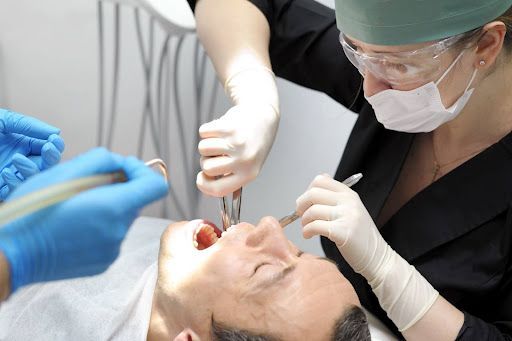What Is Sealant For Teeth?
June 30, 2021
If your dentist recently recommended for you to receive sealants, you likely have some questions about what they are and why they are being recommended. Simply put, dental sealants are specialized resin coatings placed on back teeth to help prevent cavities. The back chewing teeth are not as smooth as other teeth due to grooves.
If your dentist recently recommended for you to receive sealants, you likely have some questions about what they are and why they are being recommended. Simply put, dental sealants are specialized resin coatings placed on back teeth to help prevent cavities. The back chewing teeth are not as smooth as other teeth due to grooves and pits, making the surfaces harder to keep clean.
Do Dental Sealants Prevent Cavities?
With pits and fissures in the teeth, it’s very easy for food, bacteria, and other particles to become stuck inside. This, in turn, provides the perfect breeding ground for cavities to form and for teeth to decay. Sealants act as a hardened blanket on top of the tooth to keep out particles and bacteria that could turn into cavities. According to the Journal of the American Dental Association, sealants reduce the risk of cavities by 80%.
Who Can Benefit From Sealants
It’s entirely safe and effective for individuals of all ages to receive sealants. Sealants are effective for adults because if they are cavity-free yet display deep pits and fissures, a sealant might be recommended to prevent future cavities.
When a child grows a new adult tooth, they are not as resistant to bacteria and decay as an adult’s tooth is because the enamel coating that protects teeth has not fully developed and hardened yet. That, coupled with less vigilant hygiene habits, lead to an increased chance of getting cavities. Fortunately, this is where dental sealants can be extra effective.
How Are They Placed?
The process for receiving sealants is painless and relatively fast. The tooth is first cleaned and dried, and any existing decay is removed. A solution is then applied into the pits and grooves of the teeth, which makes the sealant stick better to the exact shape of the tooth.
Next, the liquid sealant is painted on the tooth and very quickly hardens, and a blue light is sometimes used to ensure it is completely cured. After the appointment is over, you are able to eat and drink right away.
How Long Do They Last?
Sealants typically last around nine years before having to be replaced. However, they have the potential to fall off of the tooth sooner. During check-ups, your dentist will check to make sure your sealants are still in place, and replace them if they are missing. They will last longer by avoiding foods or candies that are very sticky or hard.
Virtually Unnoticeable
Right after the sealant is applied, you may be able to feel a smooth texture when running your tongue over your teeth. You may also feel as if your back teeth don’t fully touch when you bite down. However, these feelings are temporary and will usually go away after the first day. After that, you should not be able to tell at all that you have sealants.
How To Know When Sealants Are Necessary
While looking at your teeth during your routine 6-month check-up, your dentist will be able to tell if dental sealants would be beneficial for you. If you have any sort of oral issue, are prone to cavities, or simply haven’t booked a check-up in a while, the staff at our dental clinic near Evanston is here for you. Contact us today to schedule an appointment to find out if sealants are right for you. We look forward to seeing you in our office.
The post What Is Sealant For Teeth? appeared first on Stephens Dentistry.







